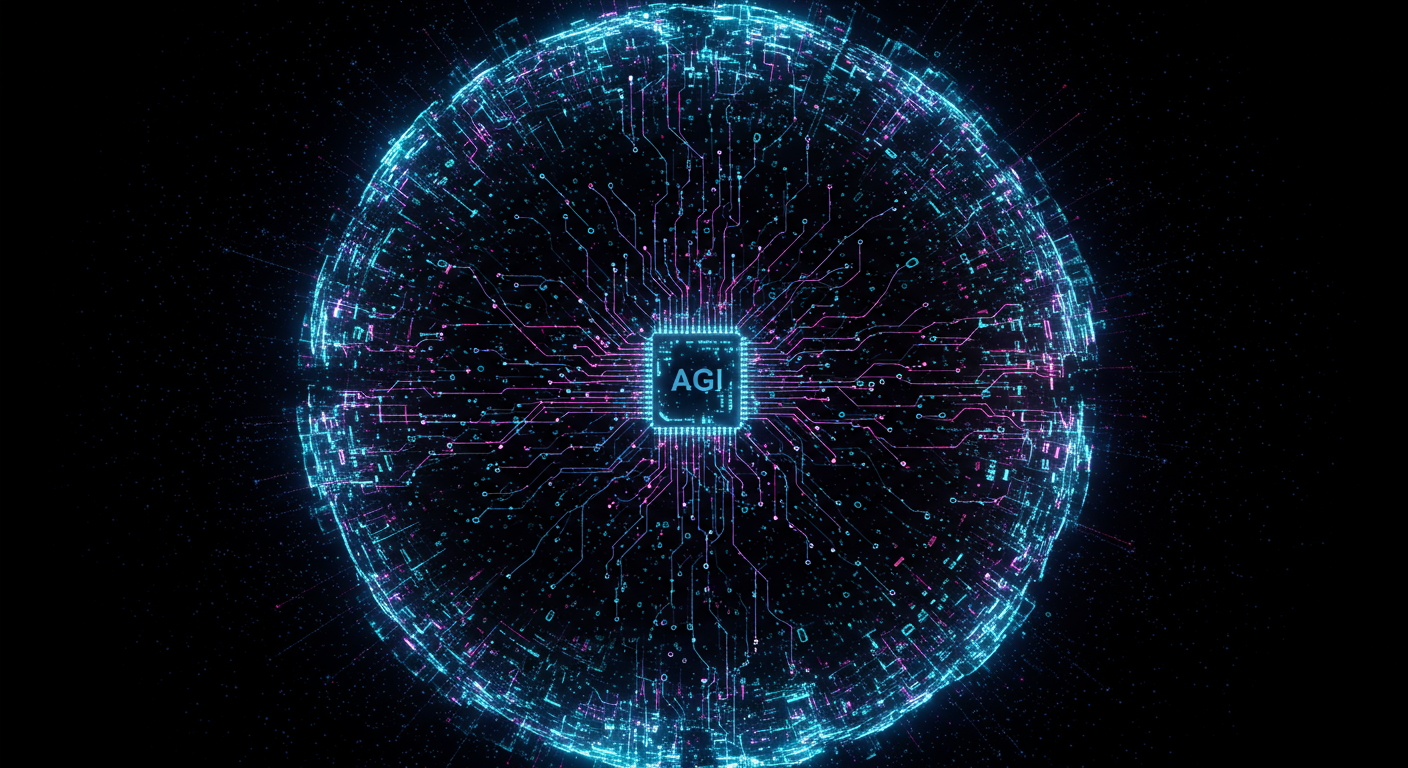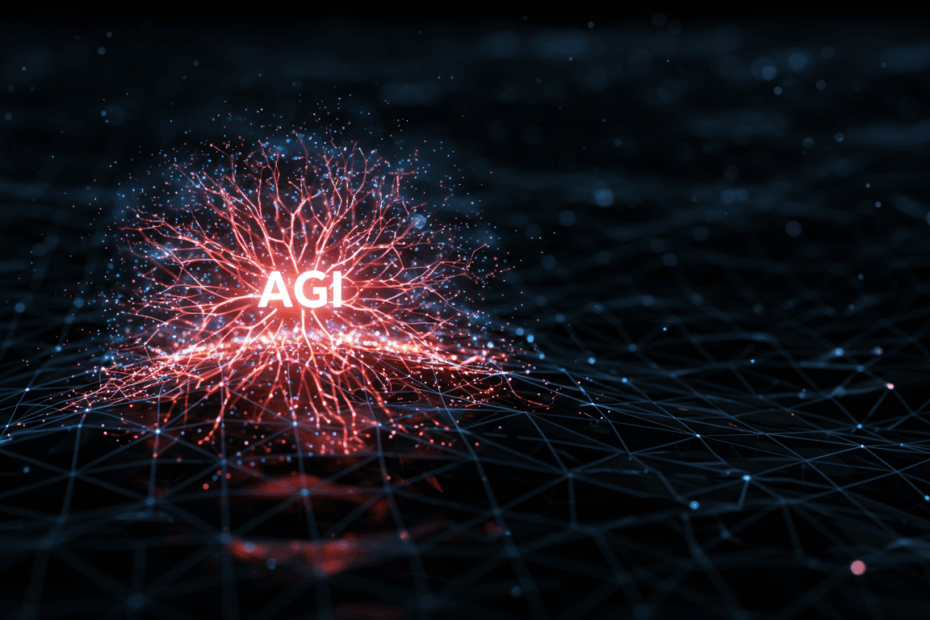AGI is trending! Demystifying Artificial General Intelligence: Tech, timelines, & potential. Get up to speed now!#ArtificialIntelligence #AGI #MachineLearning
🎧 Listen to the Audio
If you’re short on time, check out the key points in this audio version.
📝 Read the Full Text
If you prefer to read at your own pace, here’s the full explanation below.
Introducing AGI: A Beginner-Friendly Guide Based on Trending Insights from X

Basic Info: What is AGI (Artificial General Intelligence)?
John: Hey everyone, welcome to our blog post on AGI, or Artificial General Intelligence. As a veteran tech journalist, I’ve covered AI for years, and today, Lila and I are diving into this hot topic based on what’s trending on X right now. Lila, why don’t you kick us off with the basics?
Lila: Sure thing, John! So, what exactly is AGI? In simple terms, Artificial General Intelligence refers to a type of AI that can understand, learn, and apply knowledge across a wide range of tasks at a level comparable to or even surpassing human intelligence. Unlike narrow AI, which is great at specific things like recommending movies on Netflix, AGI would be like a super-smart assistant that can handle anything you throw at it.
John: Exactly, Lila. From what I’m seeing in trending posts on X, people are buzzing about AGI as the next big leap in AI. It started gaining traction in the mid-20th century with early AI researchers like Alan Turing pondering if machines could think like humans. But it really picked up steam in the 2000s with advancements in machine learning. The core problem AGI aims to solve is creating AI that’s not limited to one job—think solving complex global issues like climate change or medical research by adapting to any challenge.
Lila: That makes sense. But when did it really start? I read that concepts of AGI date back to the 1950s with the Dartmouth Conference, where AI as a field was born. As of now, in 2025, we’re still chasing full AGI, but posts on X suggest we’re getting closer with models that reason and act more generally.
John: Spot on. The problem it solves is bridging the gap between specialized AI and human-like versatility, potentially revolutionizing industries by automating creative and adaptive tasks.
Technical Mechanism: How Does AGI Work?

Lila: Okay, John, let’s break down the tech side without getting too jargony. How does AGI actually work under the hood?
John: Great question, Lila. At its core, AGI builds on neural networks—these are like digital brains inspired by how our neurons connect and fire. In plain words, a neural network is a bunch of algorithms that process data in layers, learning patterns from examples. For AGI, it’s about scaling this up to handle general intelligence, often using large language models (LLMs) which are trained on massive datasets to predict and generate text, images, or actions.
Lila: Oh, like how ChatGPT works? But AGI would go beyond that, right? From trending discussions on X, folks are talking about agent-based systems, where AI doesn’t just respond but plans, acts, and learns from interactions in real-time. That sounds like combining reinforcement learning—where AI learns by trial and error with rewards—and transformers, which are tech that helps process sequences of data efficiently.
John: Precisely. Transformers, for instance, allow models to pay attention to different parts of input data, making them great for understanding context. In AGI pursuits, we’re seeing integrations of multiple AI techniques: supervised learning (training on labeled data), unsupervised learning (finding patterns without labels), and even evolutionary algorithms that mimic natural selection to improve AI over time. The goal is an AI that generalizes knowledge across domains, like applying math skills to solve a puzzle in biology.
Lila: Cool! So, it’s not just one mechanism but a symphony of AI methods working together. Based on recent X posts, innovations like agentic AIs are key, where the system can break down tasks into steps and execute them autonomously.
John: Yes, and as trends show, the push is for systems that reason step-by-step, much like humans do, to achieve that general intelligence.
Development Timeline: Past, Present, and Future
Lila: Let’s talk timeline. In the past, what were the key milestones for AGI?
John: In the past, AGI’s journey began with theoretical foundations in the 1950s-60s, like the Perceptron, an early neural network model. The 1980s saw expert systems, rule-based AIs, but they were limited. The real boom came in the 2010s with deep learning breakthroughs, like AlphaGo beating humans at Go in 2016, showing AI could master complex games.
Lila: And as of now, in 2025, we’re seeing models like OpenAI’s o3 or Gemini 2.5 Pro pushing boundaries, as mentioned in web insights. Trending X posts highlight DeepMind’s warnings about AGI by 2030, with current status focusing on reasoning models that think and act.
John: Absolutely. Current status: We’re at the cusp, with prototypes demonstrating general capabilities but not full AGI yet. Looking ahead, future goals include achieving human-level adaptability by 2030, as per expert predictions on X, with milestones like autonomous agents in 2026.
Lila: In the near future, posts suggest wide-scale deployment by 2026, transitioning to something transcendent. Exciting!
Team & Community: Credibility and Engagement
John: The teams behind AGI efforts are crucial. Think of labs like OpenAI, DeepMind, and Anthropic—founded by AI pioneers with backgrounds in machine learning and neuroscience. Their credibility comes from track records in breakthroughs like GPT models.
Lila: Yeah, and on X, engagement is massive. Users like Rob Bensinger share forecasts, while the Artificial Superintelligence Alliance discusses generalization. It’s a vibrant community of researchers, devs, and enthusiasts debating timelines and ethics.
John: Community involvement boosts credibility, with open discussions on risks and potentials, fostering collaborative progress.
Use-Cases & Future Outlook
Lila: What about real-world uses? Right now, AGI-like systems are in research for drug discovery, autonomous driving, and personalized education.
John: As of now, applications include AI assistants that handle multi-step tasks. Looking ahead, future outlook from X trends points to revolutionizing healthcare, solving climate issues, and even national security, with potential for superhuman capabilities.
Lila: In the near future, we might see AGI in everyday tools, adapting to any job seamlessly.
Competitor Comparison: What Makes AGI Stand Out?
John: Compared to narrow AI like Siri or specialized bots, AGI stands out for its versatility. Versus other general pursuits, like those from Google or Meta, the focus on ethical, safe development in leading labs differentiates it.
Lila: True, while competitors might prioritize speed, trending posts emphasize AGI’s potential for true generalization, setting it apart.
Risks & Cautions: Limitations and Ethical Debates
Lila: We can’t ignore the downsides. What risks are people talking about on X?
John: Risks include misuse for bioweapons, as warned in DeepMind papers. Ethical debates cover job displacement, biases in training data leading to unfair outcomes, and security concerns like hacking superintelligent systems.
Lila: Also, limitations: Current AI lacks true consciousness, and there’s the “alignment problem”—ensuring AGI’s goals match humanity’s. Posts highlight speed over safety dynamics.
John: Cautions: Always verify AI outputs, as they can hallucinate or amplify biases.
Expert Opinions / Analyses: Real-Time Feedback from X
Lila: Experts on X are vocal. One post from a researcher notes AGI could emerge by 2030 with deadly risks, while another predicts 10 years away needing big innovations.
John: Analyses emphasize refinement, integration, and safety. Credible voices warn of information asymmetries and power concentration.
Latest News & Roadmap: What’s Ahead
John: Latest news from X: Discussions on new reasoning models and agentic AIs. Roadmap includes achieving omni-use by 2026, with focus on safety.
Lila: Ahead: More breakthroughs in generalization, per trending insights.

FAQ: Common Beginner Questions
John: Let’s answer some FAQs.
- What’s the difference between AI and AGI? AI is narrow; AGI is general, human-like.
- Is AGI here yet? Not fully, but close per trends.
- Can AGI be dangerous? Yes, if misused.
- How can I learn more? Follow X discussions and AI news sites.
- What’s the timeline? Possibly by 2030.
- Is AGI ethical? Debated; focus on alignment.
Related Links
Lila: Check out:
- Official sites like openai.com or deepmind.com
- Research papers on arXiv.org
- X for trending discussions
Final Thoughts
John: Looking at what we’ve explored today, AGI (Artificial General Intelligence) clearly stands out in the current AI landscape. Its ongoing development and real-world use cases show it’s already making a difference.
Lila: Totally agree! I loved how much I learned just by diving into what people are saying about it now. I can’t wait to see where it goes next!
Disclaimer: This article is for informational purposes only. Please do your own research (DYOR) before making any decisions.
